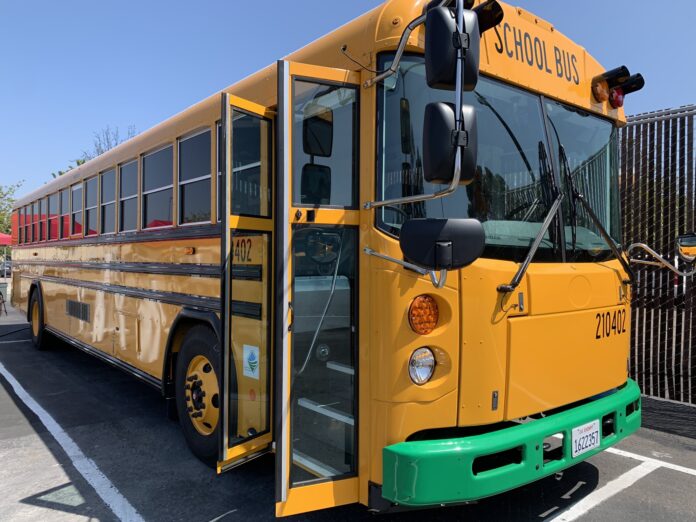In a startling series of events in southern California, a group of as many as 20 migrants attempted to board school buses filled with children in San Diego County this past week. The incidents occurred along two school bus routes near Highway 94 and Cochera, raising significant concerns among parents and school officials alike.
The first incident took place on Tuesday, when three migrants were seen walking in the middle of the highway, attempting to stop one of the district’s school buses. The bus driver, forced to maneuver around the group, continued on the route without further incident. However, the situation escalated the following morning when about 20 migrants rushed toward another school bus as it was picking up students at the same location.
Parents who were present during the second incident intervened, helping the bus driver ensure that none of the migrants boarded the bus. Nicole Cardinale, a concerned mother whose eight-year-old son was on one of the affected buses, described the experience as “really scary.” She recounted how her son described the adults, all carrying backpacks, attempting to board his bus. The sheer number of migrants and their desperation made the situation particularly unsettling for the young students.
In response to these alarming events, Superintendent Liz Bystedt of the Jamul-Dulzura Union School District took immediate action. In a letter to parents, Bystedt announced a new protocol: buses would now bypass stops where migrants are present, heading directly to the next stop on the route to ensure the safety of both students and bus drivers. She urged parents to remain vigilant and to follow the bus if it skips a stop, reassuring them that student safety is the district’s top priority.
🚨 URGENT: This morning, a group of migrants tried to board a @JamulDulzuraUSD School Bus on the way to school, and yesterday, had to avoid a similar situation. Border Patrol, CHP, and the Sheriff’s Office are investigating. Official email sent to parents: pic.twitter.com/W3D8BcoQsZ
— Amy Reichert (@amyforsandiego) August 28, 2024
The motivations behind the migrants’ attempts to board the school buses remain unclear. However, Pedro Rios, a migrant advocate, suggested that the extreme heat and challenging terrain in the area could drive such desperate actions. The school district has reported the incidents to the U.S. Border Patrol, California Highway Patrol, and the San Diego Sheriff’s Office. The Sheriff’s Department, acknowledging the seriousness of the situation, has launched a follow-up investigation to determine if any criminal acts were committed.
TODAY – A group of “migrants” tried to board a school bus full of kids.
YESTERDAY – a group of “migrants” tried to stop a school bus full of kids!
How many think they’re “illegal” immigrants!
This is 1000% possible because of Klamaka!!! pic.twitter.com/iGQrWFnlEJ
— David J Harris Jr (@DavidJHarrisJr) August 29, 2024
These incidents come at a time when San Diego has become the busiest corridor for illegal crossings along the U.S.-Mexico border. In April, the region overtook other areas as the primary entry point for migrants, reflecting the rapidly changing migration routes. Many migrants view San Diego as one of the easiest and least dangerous places to cross, partly due to its proximity to Tijuana, the largest city on the Mexican side of the border.
The influx of migrants in San Diego presents unique challenges for U.S. authorities. Unlike other border areas where most migrants come from Mexico or Central America, San Diego sees arrivals from nearly 100 different nationalities. This diversity complicates deportation efforts, as flights to many of these countries can be costly and difficult to arrange. U.S. officials note that while migrants from Mexico, Guatemala, and Honduras are a smaller presence in this region, the increasing number of arrivals from places as far-flung as India, Georgia, Egypt, and Vietnam adds layers of complexity to managing the situation.
As this story unfolds, the safety of schoolchildren and the broader implications of shifting migration patterns remain at the forefront of concerns for both the local community and national authorities. The situation highlights the delicate balance between maintaining public safety and addressing the humanitarian needs of those driven to desperate measures in their pursuit of a better life.


